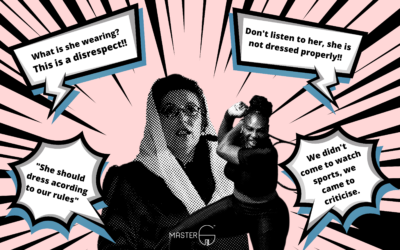The basis of the evolution of call-out culture has taken a political turn. It no longer constricts itself to the righteous argument of it, nor has it remained just a human urge to point out the wrong in others. Call-out culture has become more common on social media in recent years, and it is often political or related to social justice reform. In the case of the global apparel industry, it has individuals on one hand and brands, on the other hand, finding themselves at the forefront of call-out culture as a result of things they’ve done, said, or simply been linked to.
Liberals and progressives are the most affected by the call-out culture, and even they are not immune. Activists use the call-out culture to bring controversial attitudes to light. This pointing out can be sometimes presumptuous, misinterpreted and a mirror to one’s own attitudes towards an issue. On the internet, call-outs are always louder and more vicious, exacerbated by the “clicktivism” mentality that offers anonymity for bad conduct.
In the fashion industry, it is a modern method of combating copycats and gaining popularity. Brands use social media to air their grievances with the public, bringing attention to design imitators while also educating customers about authenticity. Posts gain popularity in the fashion industry, which is rife with infringements of intellectual property rights.
Wendy Yu Curator in Charge of The Costume Institute at the Metropolitan Museum of Art says, “It’s been used to express patriotic, nationalistic, and propagandistic tendencies as well as complex issues related to class, race, ethnicity, gender, and sexuality.” Roach, who works with such stars as Zendaya and Celine Dion, says the demand for accountability extends to celebrities and influencers. “You can’t just post a photo of yourself wearing a BLM T-shirt—people are onto that; they’ll be up in your comments, like, what have you actually done for the movement—and who made that shirt, anyway?”
It can be said that it is the commercial aspect of an activity contrived in social settings to unnerve a person not dressed for the occasion. The lack of made upness is interpreted as disinterested in the collective joy and celebration and the bigger deal when one is not dressed to express the grievances. The mandates are set by a small group of influential people and followed through by the community or a group.
In the case of an individual standing up against the accusation or accusing someone by calling out, it is their way of saying to the world that their voices will not be stifled and that they will not remain quiet in the face of interpretive imperialism.
Despite this, the issue raises itself of whether fashion can be political. Which, of course, requires the proper response: Wasn’t it always? Sumptuary laws prevented commoners from dressing above their station in the Middle Ages, and sans-culottes wore hardy trousers as a badge of working-class pride during the French Revolution. Closer to our times, the Black Panthers used clothing to both capture and fight authority, embracing a uniform of leather jackets and berets to reflect their deputization as a counter–police force, while power suits and pouffe skirts sublimated Reaganite corporate triumphalism in the “Greed is good” 1980s. This form of intertwining can be found in a plethora of places.
Designers all over the world, whether indie start-ups or globally renowned maisons, are integrating politics into their brands at every stage, from runway dreams to the nuts and bolts of how collections are made. These designers aren’t just designing clothes; they’re also making progress alongside activists and organizers. That, in itself, is a selling point.
Indian textiles date back to the dawn of time. The structured business, i.e. the fashion industry, is what we recall. It is impossible to distinguish the two. The industry is what it is now and what it should have been because of its roots and art.
The criticism gaining an edge democratizes the platform of designing and makes it for a full-fledged business to bring out the un-authenticity in the brands that are contemporary and competition to them.
In this technological era, fashion critique has found a new political medium, influenced by the rise of online call-out culture,’ a cultural phenomenon born of the digital age. Within the notoriously hermetic fashion industry, independent voices are gaining momentum, keeping fashion designers, advertisers, writers, and all those in the middle responsible not just for copycat fashion items, but also for racist and bigoted appropriations that appear in campaigns and editorials. Extrapolating how and why these cultural trends have gained momentum in relation to the contemporary fashion industry and what this means for the industry’s future analyses the fundamentals of the ‘call-out culture’ in the fashion industry. The pros and cons of the method though, can be decided by you.




0 Comments